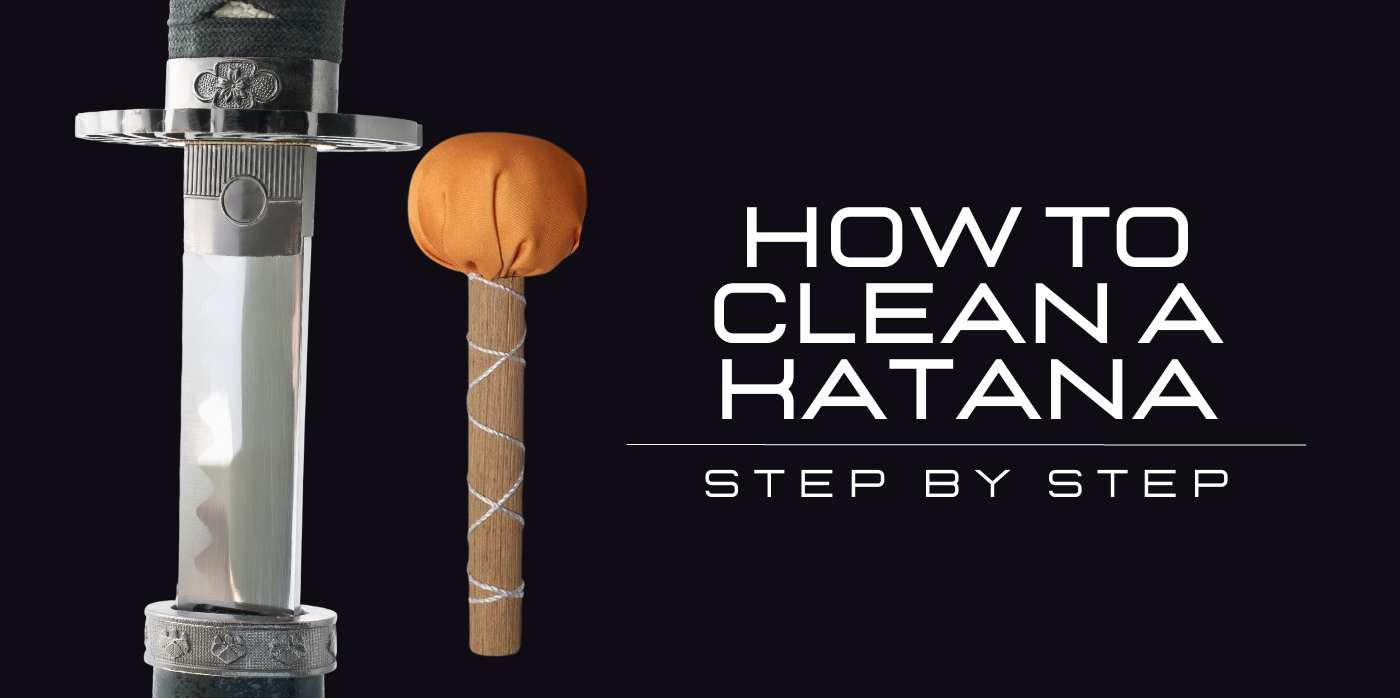The Katana, an iconic emblem of feudal Japan's samurai class, represents a perfect combination of usefulness, elegance, and the warrior mentality. These Japanese swords, known for their sharpness, balance, and distinct curve, represent the pinnacle of samurai training, discipline, and martial arts respect. To properly wield a katana, understanding the katana history and culture and practicing katana etiquette is equally important as mastering physical skills. This guide will walk you through the fundamental aspects of using a katana, focusing on everything from katana handling and sword techniques to katana drills and sword fitness.
1. Preparing to Use a Katana
1.1 Safety First
When starting your katana practice, safety should be your utmost concern. Here are a few guidelines:
- Use a Practice Sword: Beginning with a blunted practice katana (Iaito) or wooden katana (Bokken) is highly recommended. This allows you to get used to the weight and balance of the sword without the risk of injury from a sharp blade.
- Wear Protective Clothing: Traditional Japanese sword arts are practiced wearing a Gi and Hakama. The thick fabric provides some protection against accidental scrapes or knocks. Also, consider using a Tsuba, or handguard, for additional safety.
- Clear Your Practice Area: Make sure the space around you is free of obstacles. An accidental swing could hit an object or person, causing damage or injury.

1.2 Handling the Katana Correctly
A katana is more than just a weapon, it's a valuable artifact that should be handled with care. Here are a few advices to understand the Samurai sword:
- Understanding the Katana: Learn about the katana's many components, such as the Tsuka (handle), Tsuba (hand guard), Saya (scabbard), and Habaki (blade collar). Each component is essential to the overall functioning and beauty of the sword.
- Proper Grip: Hold the Tsuka with both hands, dominant hand up close to the Tsuba. The grip should be firm, but not tense. Ensure your thumbs and index fingers form a 'V' shape, which should point towards the Tsuba.
- Positioning the Katana: In a standard stance, the katana should be held with the cutting edge (Ha) facing up. The blade should be in line with your forearm to ensure a clean, straight cut.

1.3 Correct Posture
The correct stance, or Kamae, is crucial in katana usage. Here's how to position yourself:
- Standard Posture (Chudan-no-Kamae): Stand with your feet shoulder-width apart, knees slightly bent. Hold the katana at your naval level, extending it forward but angled down.
- Breath Control: Breathing should be natural and deep, from your diaphragm, not shallow from the chest. This helps maintain balance and control during movement.

2. Basic Katana Techniques
2.1 Drawing the Katana (Nukitsuke)
The way of drawing a katana (also called "Nukitsuke"), is a technique in and of itself. Here's a step-by-step guide:
- Beginning Position: Stand in a relaxed position with the katana sheathed at your left hip.
- Grip the Handle: Place your left hand on the bottom of the Tsuka, and your right hand on the top near the Tsuba.
- Drawing the Blade: Slide your thumb along the edge of the Tsuba and push it slightly to release the blade from the Saya. Begin drawing the katana from the Saya with your right hand while pulling back the Saya with your left.
- Final position: The blade should be in a horizontal posture in front of your chest at the end of the draw, ready to strike.

2.2 Basic Cuts
There are many cutting techniques, but let's focus on the most common, the downward diagonal cut (Kesa-Giri):
- Start Position: Begin in Chudan-no-Kamae, the standard posture mentioned earlier.
- Swing the Katana: Lift the katana above your head (Furikaburi), then swing it downwards in a smooth motion, cutting diagonally from shoulder to opposite hip.
- Ending Position: End with the blade pointing somewhat downwards and to your side, a position called Gedan-no-Kamae.

2.3 Thrusting (Tsuki)
The basic thrust, or Tsuki, targets the throat or chest of the opponent. Here's how to do it:
- Start Position: Begin in Chudan-no-Kamae.
- Thrust: Extend both your arms and the katana straight forward towards your target. Keep your wrists straight and your grip firm but not tense.
- Recover: Immediately after the thrust, return to the Chudan-no-Kamae position, ready for the next movement.
2.4 Defensive Techniques
Basic defensive techniques focus on blocking and redirecting an opponent's attack. Here's a simple block:
- Start Position: Begin in Chudan-no-Kamae.
- Block: Lift the katana, moving the Tsuba to the position where the attack is anticipated. Your blade should be slanted upwards, creating an angle that can deflect the opponent's blade.
- Recover: Return to Chudan-no-Kamae immediately after the block, ready for counteraction or further defense.

Learning how to use a katana may require time and a lot of practice. With time and dedication, the techniques that once seemed complex will become second nature, and you'll find a rhythm in the seemingly dance-like movements of Japanese swordsmanship. Most importantly, embrace the journey, the road to mastery is just as important as the destination. Remember, consistency is key in mastering the art of the katana.
Also, after using your sword, don't forget to clean your katana!
3. Honing Your Katana Skills
3.1 Practice
Katana practice is crucial to mastering the art of the katana. Katana drills often include practicing kata (formal exercises), which can help enhance your katana precision and sword speed.
3.2 Training with a Sensei
Training under a qualified Sensei is essential to understanding the depth of sword arts. Whether it's Kendo, Kenjutsu, Iaido, or Battojutsu, a Sensei can guide you through the sword techniques while helping you avoid katana common mistakes.
3.3 Martial Arts Disciplines
Various martial arts disciplines like Kenjutsu, Iaido, and Kendo offer different approaches to using a katana. Kenjutsu focuses on the combat aspect, Iaido concentrates on perfecting draw and re-sheath, and Kendo emphasizes the sporting and character-building aspects.

Conclusion
Mastering the katana is not merely about acquiring a new skill set, it's about embracing a way of life that echoes the samurai code of Bushido. It requires physical strength for sword fighting and mental strength for mindfulness, focus, discipline, and respect for the warrior ethos.
Adept swordsmanship encompasses the understanding of sword balance, katana footwork, blade maintenance, and Dojo etiquette, among many other elements. Whether you're learning it for self-defense, cultural appreciation, or as a form of meditation, remember that every stroke of the katana, every sword technique, and every stance embodies the centuries-old legacy of the samurai class of feudal Japan.
So, don your Gi (uniform) and Hakama (pleated trousers), tighten your Obi (belt), and embark on a journey through time, tradition, and self-discovery. As you do, remember the importance of Zanshin (awareness) and Maai (combat distance) and the value of discipline, respect, and constant practice. Remember, the path to mastery is a continuous one, punctuated by bouts of learning, unlearning, and relearning. Keep your spirits high, your focus sharp, and your katana sharper. Walk the path of the warrior and embrace the way of the katana!



